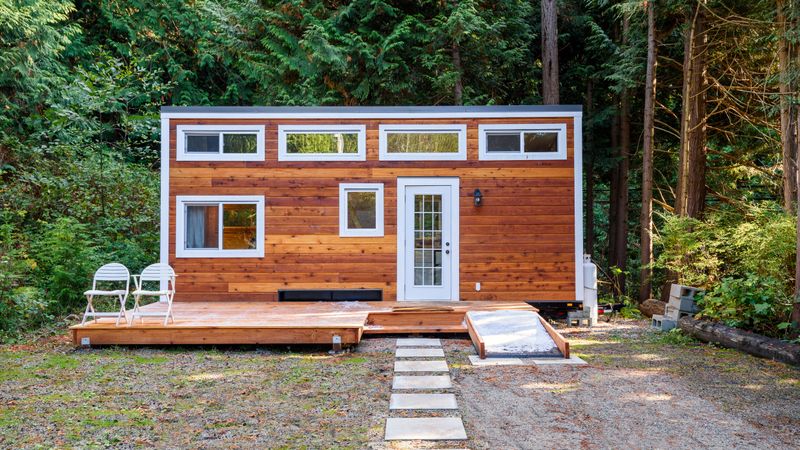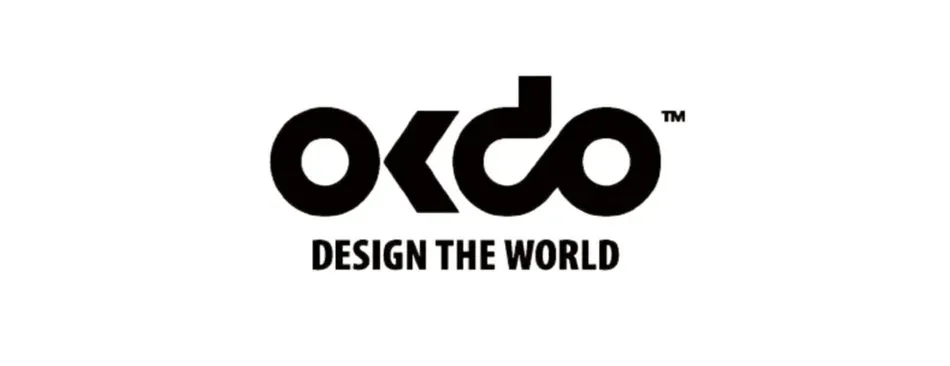How SBCs can turn vans and tiny houses into smart homes
Life in vans and tiny houses doesn’t rule out comfort and connectivity. What if you could use a simple solution like an SBC to turn them into a smart home?
Modern lifestyles combined with the pandemic restrictions and remote work boosted social movements such as van life and tiny houses. As a new and contemporary version of the surfing lifestyle, these movements have inspired people to downsize, simplify, and live with less. Adopters of these lifestyles are also motivated by sustainable and financial aspects and the wish to drive their homes everywhere freely.
But the search for simplicity does not mean living with less comfort or modernity at all. In fact, these homes can have the same comfort and automation as conventional automated smart houses. However, commercial smart home solutions can raise concerns about data security from cloud operation and access required to other apps and devices. In addition, they frequently lack interoperability and do not provide the flexibility and personalization needed by tiny houses and vans.
In this article we look at how single board computers (SBCs), provide the technical specs required to automate a van or tiny home but are also straightforward for homeowners to understand and buy at a reasonable cost. We give a brief case study using the ROCK 4 SE as an example.
Stepping towards smart
The first step to all smart home projects is to define its scope. What tasks or processes do you want to automate? What devices can perform such tasks? Understanding this enables you to start to make decisions about what sensors and hardware you will need. For example, if your objective is to monitor the van's inclination when parking to avoid sleeping at an odd angle - you are going to need a tilt sensor.
Once the scope of the project is there, it's time to choose a device with enough processing power to connect and control the project.
What can you do with SBCs? What do you need to make your van or tiny house smart?
SBCs can perform many of the same tasks as a desktop or notebook, having conventional components such as RAM, CPU, and GPU built-in. The main advantage is that they are compact, inexpensive, user-friendly, and provide high levels of customization. As a bonus, SBCs have engaged communities, such as the DS community which offer support and make entire projects available for free.
Today's SBC market provides models for a wide range of applications, from simple projects like temperature measurement to specialized solutions involving machine learning. For smart home projects, you can use general purpose, low cost SBC such as the ROCK 4 SE.
SBCs provide a variety of connections and built-in features, such as:
- USB and Ethernet ports
- HDMI and audio outputs
- eMMC, microSD card, and M.2 SSD connectors for storage
- Wi-Fi and Bluetooth®
- Multicore processors and graphical processing units (GPU)
- General purpose input/outputs (GPIO)
The variety of built-in features makes SBCs ideal for a smart tiny home or van project.
The essential hardware for a smart van or smart tiny home
The essential components to start a van or tiny house automation project is the SBC, a power source, and a storage system such as microSD or eMMC. With the components in hand, it is time to choose and install the operating system (OS). As with a conventional computer, the SBC needs an OS to manage the hardware and software you will develop and run on it.
Despite their reduced size, SBCs have enough processing power to run several OS’ available on the market. Still, the most common options are Linux distributions, such as Debian 11. You’ll find many step-by-step guides to boot your SBC on the internet, and usually, it will be up and running in less take than it takes to drink a coffee.
With the OS running, you can start programming your application on the SBC. To develop your application, you have two options:
- Configure the SBC and develop your application using your computer and export the code to the microSD or eMMC used as storage by the SBC.
- Configure and code directly in the SBC. In this case, you will need a mouse, a keyboard, and a display.
Next, as you are interested in developing an automation project, you need to know which devices you will control. Lights? Temperature sensors? Well, depending on the controlled devices, you might need expansion modules to connect the SBC and the controlled device. Expansion modules can include:
- Relay modules to control and switch water pumps, lights, ventilators, and water heaters, for example.
- Sensor modules provide information such as water level, temperature, and pressure.
- Digital inputs/outputs to monitor switches and button states or control lights, windows, and doors. SBCs typically provide a wide selection of GPIOs enabling the board to interface to virtually any real world object, often referred to as “physical computing”.
- Analog inputs/outputs to receive or transmit information from sensors. Unique to the ROCK 4 series of SBCs, they provide analogue input/output directly from the 40-pin header, removing the need for external modules and extra cost/complexity.
- Communication modules to interface and exchange information with devices such as energy meters, inverters, and battery charger controllers.
Using an open-source control system
After defining the devices and functions you will automate and list down the hardware you need, it is time to choose the software to control your system. In SBC projects, you always have the option to program all from scratch. However, if you are getting started with an SBC project or want to avoid reinventing the wheel, feel free to use solutions already developed by the SBC community. Great open-source examples are the Home Assistant and the WebThings.
Projects such as the Home Assistant make the automation project configuration and integration easier. After installing it into your OS, create the automation processes by writing code, configuring it directly through the user interface, or using one from almost 2000 public add-ons that can be download for free. In addition to making the integration and configuration more straightforward, the Home Assistant provides intuitive and interactive user interfaces.
In short, you can view or separate your tiny house or van automation project components into three groups:
- Control interface, which you can access locally or remotely;
- Control system, including the SBC, expansion module, and control software;
- Controlled devices and sensors;
Usually, automation projects will have components from all three groups. The following section will explore some features you can consider for future projects.
Smart features to add to your tiny house or van
Despite their compact size, tiny houses and vans can have the same smart systems that traditional homes enjoy. Typical applications are heating, cooling, energy, lightning, water, and pumping. You can use SBCs to create smart home projects to integrate and automate these systems, making management easier and remotely operable.
Energy generation and storage systems are crucial for off-grid vans and tiny houses. Using SBCs, it is straightforward to create a user interface displaying the consumption and storage of energy data intuitively. In addition, you can define rules to optimize energy consumption depending on the generation and energy stored. For cloudy days, when power generation from solar is reduced, you can send a warning to reduce air conditioning consumption, for example.
Off-grid vans and tiny houses can also face water supply restrictions. Therefore, adding a water tank level monitor to your automation project can be a good idea. Similarly, a propane tank level monitor can be considered. These monitoring systems will make it easy to discover earlier leaks in your system by catching abnormal level variations.
You can include other features in SBC smart home projects. Some ideas are lighting automation, security monitoring and notification, integration of virtual assistants like Alexa, user interfaces, and remote locking control. By harnessing the power of an SBC, you can implement countless features in your smart tiny home or van to make it more comfortable and modern and satisfy your needs.
Conclusion
Vans and tiny houses can be as technologically advanced as any conventional smart home. SBCs can provide you with all the flexibility to create customized automation projects to fulfill the demands and provide convenience for your van or tiny house lifestyle. The current generation of SBCs delivers high processing power at a low cost, making it possible to create complete smart hubs to control several devices and automate numerous tasks.
Co-Author: Heitor José Tessaro
The ROCK Engineering Challenge
Do you have an idea of how to use the ROCK? The challenge is open to all OEM's, startups, research teams, and students working on innovative SBC applications. Show the world what you can create with cutting-edge single-board computer hardware.
We invite engineers, entrepreneurs, inventors, and developers to submit an idea for a part, product, or system that takes advantage of the ROCK single-board computers.
- The first 500 valid entries will receive a ROCK board of choice worth $45 - $159.
Simply tell us what you are working on, and we'll send you a piece of cutting-edge hardware to bring your ideas to life. - The most-cutting edge entry will be rewarded with a grand prize of a $50,000 partnership with electronics company OKdo to scale up their project idea.
The challenge is now open until April 12th, 2023. Read more here.
How to Enter?
Submit your entry via this form. You will be asked for a comprehensive idea description, details of your team, and images or videos that support your idea. The challenge is open until April 12, 2023.
We can’t wait to see your entries!
About the sponsor: OKdo
OKdo is a brand delivering a unique combination of hardware, software, development, and manufacturing services to help customers turn their innovative ideas into commercial realities. The company has been endorsed by technology giants such as Arm, NXP, Broadcom, Intel, and SEEED. OKdo partners with different brands to bring the latest and most innovative IoT and SBC products to people around the world.



